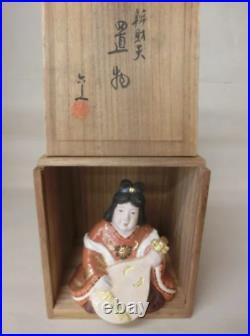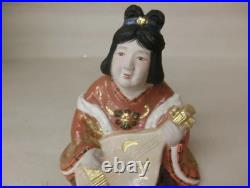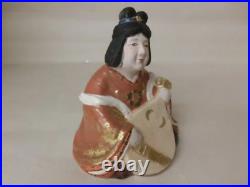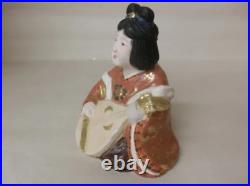Antique Ornament Benzaiten Seven Gods of Good Fortun Japan Pottery Vintage art






Antique Ornament Benzaiten Seven Gods of Good Fortun Japan Pottery Vintage art. A goddess born in India. She has radiant white skin, is clad in light silk, holds a biwa (a Japanese lute) in her arms, and walks slowly on the back of a large peacock. Her figure is noble and beautiful.
Rokubei VI was born in Kyoto in 1901 as the eldest son of Rokubei V (childhood name: Shotaro). He studied Japanese-style painting at the Kyoto Municipal School of Arts and Crafts and the Kyoto Municipal College of Painting (now Kyoto City University of Arts) under such masters of the Kyoto art world as Takeuchi Seiho and Yamamoto Shunso. He later served in the military, but after his demobilization in 1925, he began studying pottery making under his father. From the beginning of his career, he was active in the Nitten Exhibition (Teiten and Shinbunten) and became one of the representatives of the Showa era ceramic art world, exhibiting his works in many solo exhibitions and invitations to exhibitions.
In addition to his personal activities, the sixth generation also greatly developed the family business, Seirokuen, and made the Shimizu Rokubei family widely known to the public. His works range from his early designs to those based on the classics, but in particular, sansai, genkai, sansai (iron pigment), and kokkisai are representative of the decorative techniques of the Sixth Generation, many of which are based on his background in Japanese painting and show a profound sense of style through his solid technique and experience. In 1962, he was appointed a member of the Japan Art Academy, and as a leading figure in the Kyoto ceramic art world, he devoted himself to teaching and training younger artists. His sudden death was regretted by many craftsmen and crafts lovers not only in Kyoto but also throughout Japan. In that case, we will contact you by message.
International Buyers - Please Note. If it sells first, it may run out of stock. Thank you for your understanding.
